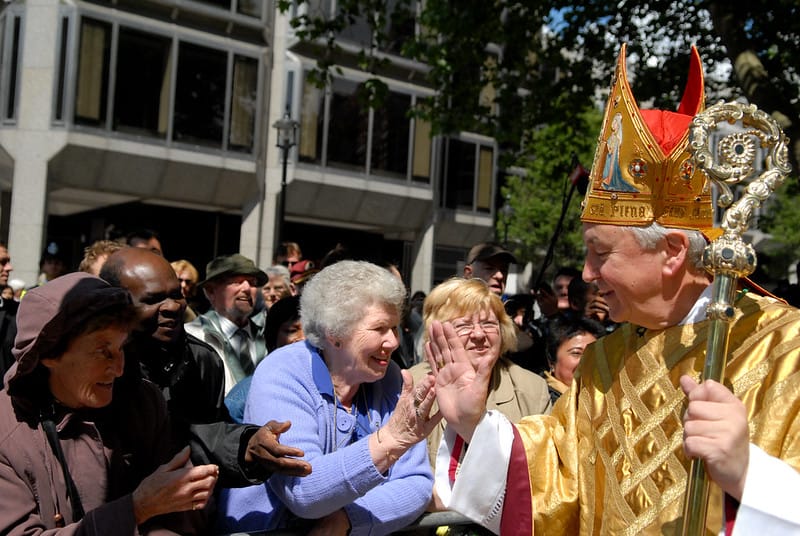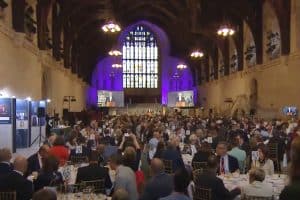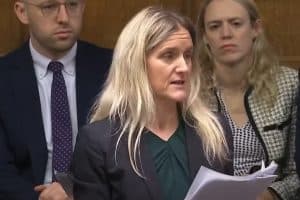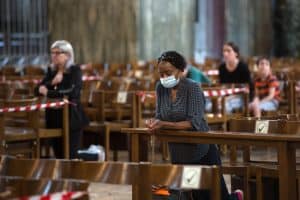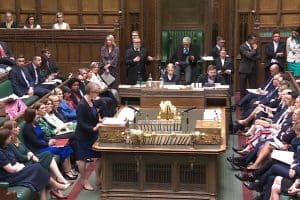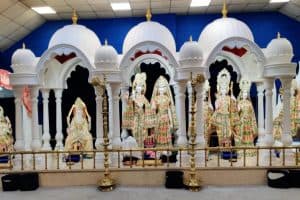By John McManus
It was the day after the death of Queen Elizabeth the Queen Mother, at the end of March 2002. At Sunday morning mass in a prosperous part of west London, a supply priest was the celebrant.
I’d never seen him before, but I and the rest of the congregation were about to get a surprise. As the bidding prayer reader prepared to leave the altar after reciting a list of the recently deceased in the parish to be prayed for, the visitor peremptorily upbraided her, saying loudly “AND for the Queen Mother”.
He was clearly annoyed at the royal oversight, though as that prayer had been for parishioners — and to the best of my knowledge, nobody had ever spotted the widow of George VI in those pews — I thought it was a little harsh. More was to come though. As the final hymn came to its conclusion, the organist and choir suddenly segued into a full-throated rendition of God Save the Queen, to the bemusement of many of the worshippers, who looked extremely puzzled.
That is the only time I have ever heard the National Anthem played at mass, and although it is occasionally heard in some parishes, it’s a rare occurrence. Of course, it would have gone unremarked in an Anglican church, where prayers for the royal family form part of the liturgy. It is a difference that takes us to the heart of the complicated relationship between Catholics and the British monarchy.
Fast forward more than 20 years, to the beginning of the new reign of the Queen Mother’s grandson. Charles III will still be Defender of the Faith, but during his long tenure as Prince of Wales, the new king has made clear his interest in other faiths — and in Catholicism.
Early in 2022, the Jesuit parish of the Church of the Immaculate Conception in central London welcomed him on a visit, and he has been to many other Catholic churches, as well as attending the canonisation of St John Henry Newman — a prominent 19th-century Anglican who converted to Catholicism — and the funeral of Pope St John Paul II (postponing his own wedding to Camilla to be there).
In March, Cardinal Vincent Nichols, the head of the church in England and Wales, made a “loyal address” to the King, promising him that “as you approach the solemn moment of your coronation, and in all the kingly service that you will continue to give in the years to come, I assure you, with great confidence, of the support and prayers of the Catholic community in England and Wales.
“May God bless Your Majesty and your Queen Consort, preserve you both in health of mind and body and grant you every grace and blessing now and for the years to come.”
Loyal addresses can be made only by representatives of 27 “privileged bodies”, of which the Catholic Church in England and Wales is now one.
Cardinal Nichols will also be present at Westminster Abbey where he will play a formal role in the service, blessing the new king — the first time a Catholic clergyman has played such a part since the Reformation. He will joined by senior Catholic leaders from Ireland, Wales and Scotland as well as the Pope’s own ambassador, the papal nuncio. A Vatican delegation was present at the coronation of Elizabeth II, but remained outside Westminster Abbey. (Background article here)
Relics of the True Cross, originally donated by the Pope, will be used as part of the coronation procession. The Catholic Bishops Conference of England and Wales has asked for prayers for the King and Queen at mass, and have issued a special prayer card to that end.
It’s all a long way from the days when Roman Catholics were viewed with suspicion, shunned by much of the establishment, and excluded from the professions. Yet it’s also a very different atmosphere from only a few decades ago. Full diplomatic relations between the Court of St James and the Holy See were not re-established until 1982. Twelve years later, when the Duchess of Kent (married to the late Queen’s cousin, Prince Edward, Duke of Kent), converted to Catholicism, there were television crews awaiting her and Cardinal Basil Hume on the steps of Westminster Cathedral.
It was a huge news event, because the family she had married into was not just a private unit, but imbued the explicitly Protestant nature of the state. The duchess’s husband would, at the time, have lost his place in the line of succession if the duchess, born Katharine Worsley, had been Catholic when they wed. Those rules have now been amended, but the restriction on heirs to the throne being Catholic still stand.
Now, the clerical representatives of Rome are edging a bit nearer to the throne again, and though it would take a religious upheaval of epic proportions for them to assume their pre-Tudor prominence close to the bosom of the sovereign — disestablishment, anyone? — it’s clear that they’re welcome, not just tolerated. How did this change come about?
For many people, as the central role of Christianity has declined in the public sphere, so has the personal importance — to some — of the theological and historical differences that exist between different churches. Many Christians decry the smaller role that their faith now plays in society, but one positive outcome has been that the habit of some believers to define themselves loudly and publicly in opposition to other Christians has become less overt.
Some Catholics may still pray for the conversion of Protestants, and there remain sincerely held theological differences between the churches — but there will be few Catholics in England this weekend who refuse to celebrate the coronation because of the King’s disbelief in transubstantiation, or because the Church of England, of which he is now the supreme governor, has ordained women as clergy, or because ultimately, the CofE is not in communion with Rome.
Attitudes are more complicated in Scotland and Northern Ireland, where history is not something that happened a long time ago and sectarianism still maintains a stronghold (as evidenced by a recent video on social media where chanting Celtic FC supporters were enthusiastically singing about where exactly, in their view, the coronation could be stuffed).
For most though, the theological and historical differences that in the past so often marked Catholics out as different, are no longer of such importance to many Christians. Or to put it another way, at a time when public displays of religious belief are so alien to a growing part of the public, those who do wish to proclaim their faith openly — whether they are commoners, princes of the church or royalty — might suddenly have realised that they have rather a lot in common after all.

